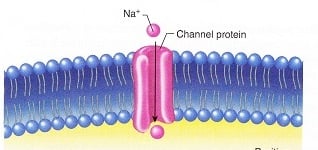Sympathetic axons leave the sympathetic chain ganglia by the...
Match the correct photoreceptor with it's function:
Match the area involved in speech with the correct definition:
Which tastant is depicted in the image below:
Which tastant is depicted in the image below:
Which tastant is depicted in the image below:
The brainstem is composed of the medulla oblongata, pons, and...
Odor ______ occurs when you can no longer distinguish a particular...
Which tastant is depicted in the image below:
Which division does the image below depict:
Which tastant is depicted in the image below:
The _______ ________ and dynamic labyrinth are two organs involved in...
Endolymph stops moving automatically once you stop moving.
Which pathway carries the sensations of two-point discrimination,...
A sudden increase in blood pressure triggers a _________ reflex, which...
Which cranial nerve is motor and parasympathetic in function,...
Which cranial nerve is sensory, transmits signals from the inner ear,...
The posterior column, spinocerebellar, and corticospinal are all...
Preganglionic cell bodies are located in the sympathetic division in...
Which cranial nerve is somatic motor, sensory, and parasympathetic in...
Which of the following are not a part of the enteric nervous system?
What is the major control center for maintaining homeostasis and...
This/these part(s) makes up the fibrous tunic of the eye:
The smooth muscle that attaches to the lens of the eye is called the:
Which of the following cranial nerves has no parasympathetic fibers?
Damage to this nerve reduces secretion to salivary and lacrima nerves.
Which cranial nerves are both motor and sensory in function?
The prosencephalon gives rise to:
What is the correct order of events for long-term potentiation:
This/these nerve(s) regulates taste and synapses in the nucleus of the...
What is the proper route sequence that tears travel:
















